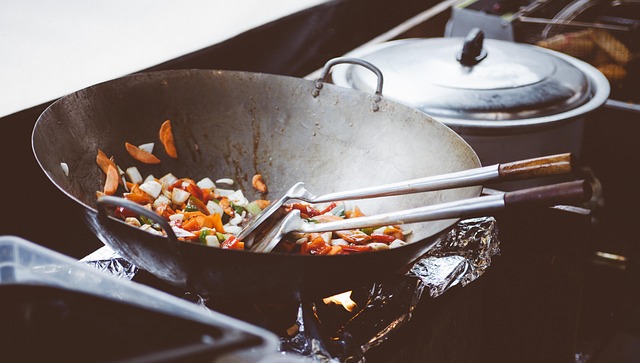Introduction to Cooking Classes and Culinary Skills Programs in the USA
This article provides an overview of cooking classes available to individuals interested in learning basic or intermediate culinary techniques.The program content includes hands-on instruction, kitchen safety practices, and recipe-based learning for home or small-group settings.Cooking classes in the USA vary in format — some are available online, while others are held in local community spaces or training centers.No prior experience is required. The article is intended for individuals looking to explore cooking as a practical skill, hobby, or personal development opportunity.

What are the benefits of taking cooking classes?
Cooking classes offer numerous advantages to participants. One of the primary benefits is the confidence boost they provide in the kitchen. As students learn step-by-step methods for preparing various dishes, they become more comfortable with different cooking techniques and ingredients. This newfound confidence often translates into a willingness to experiment with new recipes and flavors at home.
Additionally, cooking classes provide a structured environment for learning essential culinary skills. Participants can expect to receive hands-on instruction from experienced chefs or culinary educators, allowing them to practice techniques in real-time and receive immediate feedback. This hands-on approach is particularly beneficial for visual and kinesthetic learners who thrive on practical experience.
What types of cooking classes are available in the USA?
The USA offers a diverse range of cooking classes to suit various interests and skill levels. Some popular types include:
-
Basic cooking skills classes: These focus on fundamental techniques such as knife skills, sautéing, and baking.
-
Cuisine-specific classes: Participants can explore regional or international cuisines like Italian, Mexican, or Thai cooking.
-
Baking and pastry classes: These specialized courses cover techniques for creating bread, cakes, pastries, and other baked goods.
-
Healthy cooking classes: Focusing on nutritious meal preparation and dietary-specific cooking (e.g., vegan, gluten-free).
-
Gourmet cooking classes: Advanced courses that delve into more complex culinary techniques and haute cuisine.
What can you expect to learn in a typical cooking class?
A typical cooking class covers a range of essential skills and knowledge. Participants can expect to learn about kitchen safety and food preparation techniques, which form the foundation of culinary education. Instructors often emphasize proper handling of kitchen tools, food storage practices, and hygiene standards to ensure safe and efficient cooking practices.
Many classes also focus on teaching participants how to read and follow recipes effectively. This includes understanding cooking terminology, measuring ingredients accurately, and learning how to make substitutions when necessary. As students progress, they may learn more advanced techniques such as flavor pairing, plating, and menu planning.
How do cooking classes cater to different skill levels?
Cooking classes in the USA are designed to accommodate various skill levels, ensuring that everyone from novices to experienced home cooks can find a suitable program. Beginner classes typically start with the basics, introducing fundamental techniques and simple recipes. These classes often focus on building confidence and demystifying the cooking process for those who may feel intimidated in the kitchen.
Intermediate and advanced classes build upon basic skills, introducing more complex techniques and challenging recipes. These courses might explore specialized cooking methods, exotic ingredients, or advanced flavor combinations. Some programs offer tiered courses, allowing students to progress from beginner to advanced levels systematically.
What unique culinary experiences do American cooking classes offer?
American cooking classes often showcase the country’s diverse culinary heritage, offering unique insights into regional and cultural recipes commonly used in American home cooking. Participants might learn to prepare classic dishes from the Deep South, New England clam chowder, Tex-Mex favorites, or fusion cuisines that reflect America’s melting pot of cultures.
Some programs go beyond traditional classroom settings, offering immersive experiences such as farm-to-table courses where students visit local farms or markets to select ingredients before cooking. Others might include wine pairing sessions, teaching participants how to complement their culinary creations with appropriate beverages.
Where can you find cooking classes, and how much do they cost?
Cooking classes are widely available across the USA, with options to suit various schedules and budgets. Many community colleges, culinary schools, and local community centers offer cooking classes. Additionally, some grocery stores, kitchenware retailers, and even restaurants provide cooking demonstrations or hands-on classes.
| Provider | Class Type | Approximate Cost |
|---|---|---|
| Sur La Table | Single Session | $69 - $100 |
| America’s Test Kitchen Online Cooking School | Monthly Subscription | $19.95/month |
| The Culinary Institute of America | Professional Program | $15,000 - $30,000 |
| Local Community College | Semester Course | $200 - $500 |
| Williams Sonoma | Single Session | $60 - $100 |
Prices, rates, or cost estimates mentioned in this article are based on the latest available information but may change over time. Independent research is advised before making financial decisions.
The cost of cooking classes can vary significantly depending on the provider, duration, and complexity of the course. Single-session classes at retail stores or local culinary schools might range from $50 to $150, while more comprehensive programs at professional culinary institutes can cost several thousand dollars. Many providers also offer online classes or video-based courses, which can be more affordable and flexible alternatives to in-person instruction.
In conclusion, cooking classes and culinary skills programs in the USA offer a wealth of opportunities for individuals to enhance their culinary abilities, explore new cuisines, and gain confidence in the kitchen. With options available for all skill levels and interests, these classes provide a fun and educational way to develop practical cooking skills that can be enjoyed for a lifetime.






